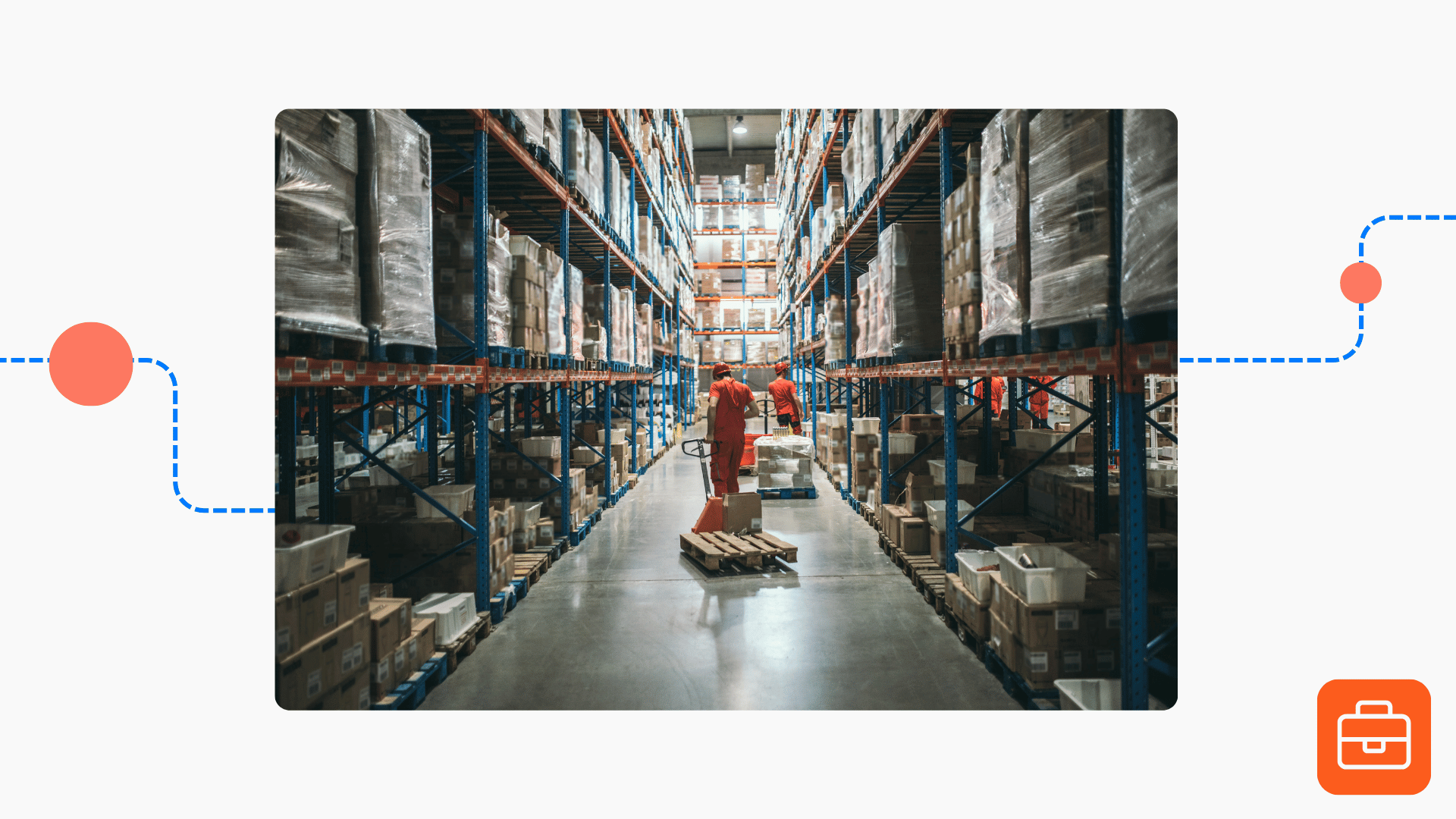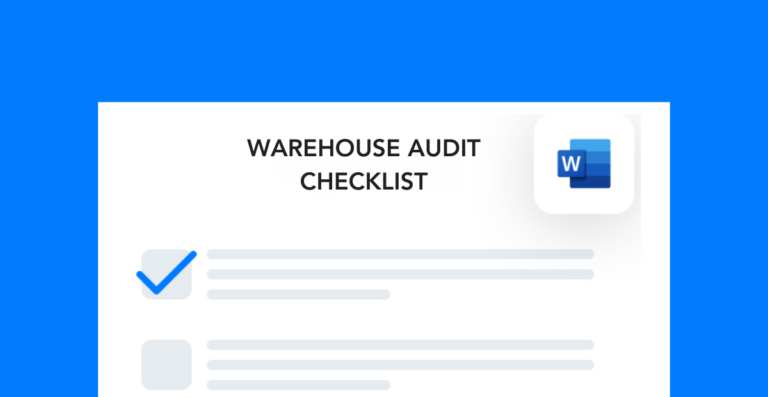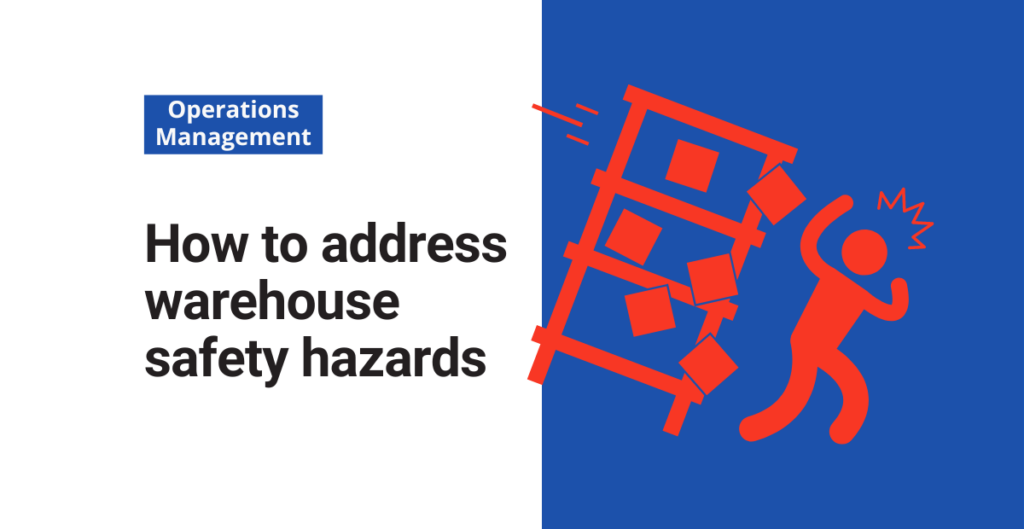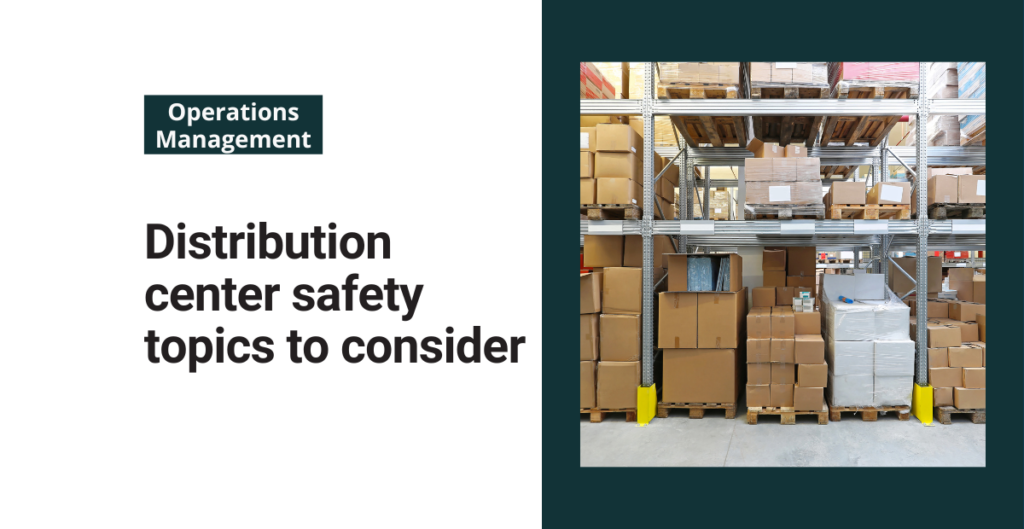As a warehouse manager, I’m always looking for ways to improve safety for my employees. And over the years, it’s become obvious that there’s always something you can do to lower the risk level of any process. At the end of the day, preventing warehouse accidents comes down to how well your team finds, controls, and monitors safety hazards.
Free template!
Download this free checklist to do a warehouse safety audit
Anticipate common warehouse accidents
Taking a proactive incident management approach means anticipating what might happen. Luckily, the Bureau of Labor Statistics publishes annual reports of injuries, illnesses, and fatalities by industry. In the warehousing and storage industry, sprains, strains, tears, bruises, contusions, soreness, fractures, cuts, and lacerations are just some of the top injuries workers experience.
The most common types of warehouse accidents include:
- PIT accidents (forklifts, reach trucks, etc.)
- Slips, trips, and falls
- Repetition or overexertion
- Machinery or equipment-related incidents
- Chemical or electrical exposure or fires/explosions
- Falling objects (products, ladders, stored equipment, etc.)
- Lockout tagout failures
When you know what’s most likely to happen, you can focus your energy on preventative measures. And in operations management, there are an endless number of ways to innovate and improve safety.
Implement preventive control measures
I’d highly suggest that you review all the control measures you have in place and ask yourself: “Does this solution control the root cause, or does it eliminate the root cause?”
The goal should always be to eliminate the problem that caused a warehouse accident. You can’t always do this, especially if the issue stems from equipment or critical processes. But even so, you can focus on preventative measures that reduce and eliminate the hazardous conditions as much as possible.
Here are some examples of preventative control measures you can implement in a warehouse:
- Requiring inspections before turning on equipment
- Adding extra machine guards
- Simplifying process steps to reduce oversights
- Removing dangerous equipment or materials from the process
Instead of blaming employees for safety accidents, figure out how their behavior was able to influence the outcome in the first place. The best way to stop an accident from happening again is to remove the decisions that led to it the first time. Your preventive controls should target these underlying conditions, not the surface level cause.
Establish safety routines
Oftentimes the pace of life in a warehouse can work against safety goals. If you’re only storing finished goods, maybe not. But if your facility stores and ships goods, then it’s probably always in motion. Having solid routines in place, especially when it comes to safety, is essential if you want to avoid major incidents.
Here are some examples of routines that I’ve implemented with my teams in the past:
Perform a pre-shift walkthrough of the warehouse and look for safety concerns, supplies that need restocked, and other issues that might affect shipping volume.
Schedule staggered safety audits of different work areas, so you review each space on a weekly or biweekly basis.
Start standup meetings with a safety topic to keep safety top of mind for everyone on your team.
Include safety as a Gemba category so that it becomes a focus of your continuous improvement efforts.
Staff someone to handle 5S by having them refill boxes and tape, move pallets, and perform general work area cleanliness and maintenance tasks.
I can’t stress how big of a factor 5S plays in preventing warehouse accidents. I would say that most of the incidents I’ve dealt with involved somebody tripping over cardboard, pallets, and other random debris. Not to mention all the instances where poor shelf or bin management led to someone getting hit in the head by a falling object. If I had to pick one area to focus on, it would always be keeping a clean warehouse.
Invest in safety
EHS departments are notoriously underfunded, even though the cost of incidents is almost greater than the cost of preventative measures. If you want to create and maintain a safe warehouse, then you have to invest in safety tools and resources.
EHS training
The quality of your training program can make or break your site’s safety performance. There are two main areas you want to invest in: training content and the trainers themselves.
If you have outdated or irrelevant training materials, then employees will be less engaged with the content. Investing in quality resources like videos, PowerPoint, and quizzes will go a long way towards improving retention and reducing accident rates.
Every manager, regardless of whether they work in the EHS, HR, operations, or quality department, should learn how to be an effective trainer. That’s because every leader within the warehouse should be able to see, coach, and correct poor safety behaviors.
Safety equipment
Another area to invest in is the safety equipment you use. Examples include respirators, fall harnesses, PIT equipment, fire extinguishers, security systems, and more. And investing in these things doesn’t always mean going for the most expensive option.
It means scheduling inspections and preventative maintenance to keep the equipment in good condition. You want to guarantee that all safety equipment always functions properly, in case there’s an emergency.
EHS software
To prevent warehouse accidents, you have to learn from past mistakes and tailor preventive actions to the issues you have onsite. You can’t do that unless you thoroughly document near misses and other incidents. Many companies invest in safety by upgrading manual processes to EHS action tracking software.
With software, you can keep all warehouse accident documentation in a central, digital location. So, any manager or senior leader who wants to review past incidents can easily do that from their computer.
Keeping a close eye on the safety events unfolding around your warehouse is the only way to prevent warehouse accidents. And getting away from paper and pen methods of documentation is the best way to do that. With automated reminders, easy-to-build reports, and simple workflows for managing incidents, investing in EHS software is the number one thing you can do to improve your site’s safety performance and internal reporting systems.





